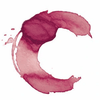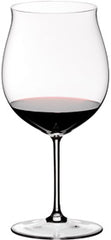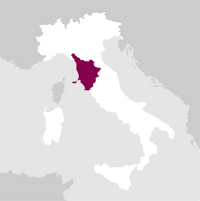Details

Perfume

Color

Taste
Serve at:
16 - 18 °C.
Longevity:
10 - 15 years
Decanting time:
1 hour

Pairings
- Start up year: 1981
- Oenologist: Franco Bernabei
- Bottles produced: 146.000
- Hectares: 56
They exhibited more interest than did the Lombards in ensuring open communication links with Rome, and perhaps inspired establishment of the Via Francigena. During the most intense historical vicissitudes of the Republic of Siena (1200- 1500), the unique position of Farnetella, on the boundary of the territory it administered, contributed to not a few problems for its inhabitants, who often extended, or more probably were forced to extend, sanctuary to exiles of the opposing political side.
The toponym Farnetella derives from farnia, the English oak (Quecus robur), which grows in great profusion at Farnetella, particularly at Castelvecchio. The coat-of-arms of both the village and the winery display this oak, against a red background; it symbolises strength and longevity.
In 1981 Castello di Farnetella was purchased by the Poggiali family, owner of the Fèlsina farm in Castelnuovo Berardenga. Read more


| Name | Castello di Farnetella Chianti Colli Senesi 2022 |
|---|---|
| Type | Red still |
| Denomination | Chianti DOCG |
| Vintage | 2022 |
| Size | 0,75 l |
| Alcohol content | 13.0% by volume |
| Grape varieties | 92% Sangiovese, 8% Merlot |
| Country | Italy |
| Region | Tuscany |
| Vendor | Castello di Farnetella |
| Origin | Sinalunga (SI) |
| Climate | Altitude: 220-560 m. a.s.l. |
| Soil composition | The soils are layered sand and silt, with some presence of clay, and larger percentages of rock and limestone. |
| Cultivation system | Vertically-trained, with spurred cordon pruning. |
| Plants per hectare | About 5400. |
| Harvest | At various times, because of the various elevations, but within the first two weeks of October. |
| Wine making | After the quality-selected clusters are de-stemmed and pressed, the must is fermented and macerated in stainless steel for 10 2 days at 28°C and 30°C, with programmed punchdowns and daily pumpovers. Drawing off and racking after fermentation. |
| Aging | In March-April, the wine is transferred to small, medium, and large oak botti for 8 2 months of maturation, followed by 3 months in the bottle. |
| Allergens | Contains sulphites |




